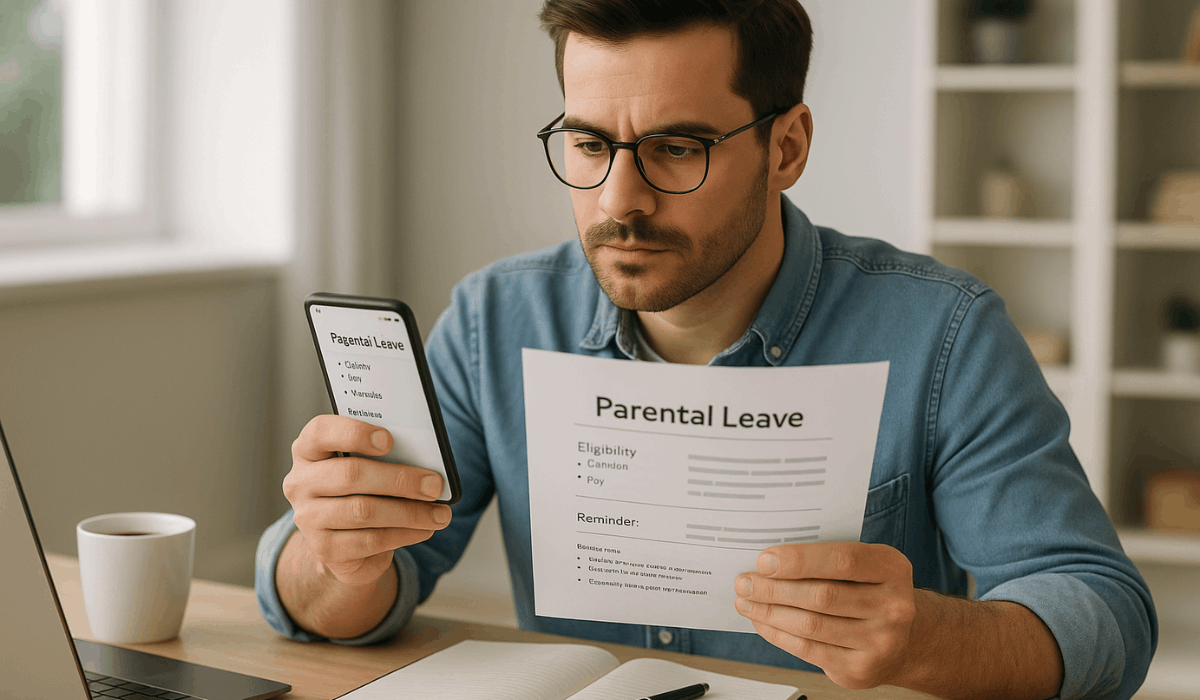Maternity and paternity leave benefits give parents essential time off to care for their newborn or newly adopted child.
Understanding how to apply and what paid entitlements you are eligible for ensures financial and job security.
This guide offers a concise overview of leave types, eligibility requirements, and the application process.
Understanding Maternity and Paternity Leave
Maternity and paternity leave are legal benefits that allow parents to take time off work while caring for a newborn or newly adopted child.
Knowing the basics of these leaves helps you plan your time and ensure your rights are protected.
- Maternity Leave: Time off granted to mothers around childbirth for recovery and early childcare.
- Paternity Leave: Time off granted to fathers to support their partners and bond with their children.
- Adoption Leave: Leave available for adoptive parents to care for their newly adopted child.
- Purpose: Supports family health, parental bonding, and financial stability during early childcare.
- Legal Protection: Employees are entitled to job security during leave and protection from unfair dismissal.
- Duration: Varies by country, typically ranging from several weeks to several months, depending on labor laws and employer policies.
Paid Leave Entitlements
Paid leave amounts vary by country and employer.
Understanding entitlements ensures you receive proper financial support during your leave.
Maternity Leave Benefits
- Standard Duration: Typically several weeks to months, depending on national laws and employer policies.
- Salary Coverage: Employees may receive full or partial salary during leave.
- Additional Allowances: Some employers provide healthcare coverage, insurance benefits, or childcare support.
Paternity Leave Benefits
- Duration and Payment: Usually shorter than maternity leave; can be paid at full or partial salary.
- Flexible Options: Some countries or employers allow split leave, shared parental leave, or part-time arrangements.
Adoption and Surrogacy Leave
- Eligibility Criteria: Adoptive or surrogate parents must meet specific conditions, such as providing legal documentation or completing a specified employment period.
- Paid Leave Duration and Payment: This often follows maternity leave policies and may provide partial or complete salary, depending on the employer's rules.
Eligibility Criteria
Not all employees automatically qualify for maternity, paternity, or adoption leave.
Knowing the eligibility requirements helps you plan and ensures a smooth application process.
- Employment Duration: Many employers require a minimum period of employment before an employee qualifies for leave.
- Employment Type: Full-time, part-time, and contract workers may have different eligibility rules.
- Documentation Required: Typically, a birth certificate, medical certificate, or adoption papers are required.
- Employer Notification: Some companies require advance notice to approve leave.
- Legal Compliance: Employees must meet national or regional labor law criteria for parental leave.
- Special Circumstances: Eligibility may differ for multiple births, adoption, or surrogacy cases.

How to Apply for Maternity and Paternity Leave
Applying for maternity or paternity leave requires following a formal process to ensure approval and timely payment.
Knowing the steps helps you avoid delays and secure your benefits efficiently.
- Notify Your Employer: Submit a written notice or email to HR well in advance of your expected leave date.
- Prepare Required Documents: Include birth certificates, medical certificates, or adoption papers as needed.
- Complete Leave Forms: Fill out any internal forms or online applications provided by your employer.
- Confirm Approval: Ensure that your leave dates and payment terms have been officially approved.
- Understand Payment Schedule: Verify when and how you will receive your salary or benefits during leave.
- Plan Leave Timing: Decide whether to take leave before, after, or around the childbirth/adoption date.
Tips for a Smooth Application
A well-prepared application increases the chances of timely approval and reduces stress.
Following simple best practices ensures your maternity or paternity leave process goes smoothly.
- Plan Ahead: Notify your employer as early as possible to allow for processing and scheduling.
- Organize Documents: Keep all required certificates, forms, and supporting papers ready.
- Understand Company Policies: Review your employer’s leave rules and benefits to avoid surprises.
- Maintain Clear Communication: Stay in touch with HR to confirm receipt and approval of your application.
- Keep Copies: Retain copies of all submitted forms and correspondence for reference.
- Track Deadlines: Note submission dates and payment schedules to ensure benefits are received on time.

Combining Leave With Other Benefits
Maternity and paternity leave can often be used alongside other workplace benefits.
Understanding how to combine these benefits helps you maximize support during your time off.
- Paid Time Off (PTO): Some employers allow you to use accrued vacation or sick leave alongside parental leave.
- Flexible Work Arrangements: Options like remote work, reduced hours, or phased return can complement leave.
- Short-Term Disability: In certain countries, short-term disability insurance can supplement maternity leave payments.
- Family or Caregiver Benefits: Some workplaces offer additional allowances for childcare, family support, or dependent care.
- Government Programs: Parental leave can often be combined with government subsidies or social security benefits.
- Insurance Coverage: Health insurance, life insurance, or other benefits may continue while on leave.
Returning to Work After Leave
Returning to work after maternity or paternity leave can require careful planning.
Knowing what steps to take ensures a smooth transition and continued workplace support.
- Notify Your Employer: Confirm your return date in advance to help with scheduling and workload planning.
- Review Policies: Familiarize yourself with any flexible work options or phased return programs your company offers.
- Plan Childcare: Arrange reliable childcare to avoid stress and interruptions during work hours.
- Catch Up on Updates: Familiarize yourself with any changes in workplace procedures or projects during your leave.
- Discuss Workload: Meet with your manager to review responsibilities and priorities for a smooth transition.
- Maintain Benefits: Ensure health insurance, retirement contributions, and other benefits are properly reinstated.
Common Questions and Answers
Employees often have additional concerns when planning maternity, paternity, or adoption leave.
Understanding these frequently asked questions, including aspects that may not have been covered, helps you thoroughly prepare and avoid surprises.
Can I use leave for prenatal or postnatal care?
- In many countries, maternity leave can start before birth or be extended after delivery for medical recovery.
Does sick leave affect parental leave?
- Some employers allow employees to take overlapping sick leave and maternity/paternity leave to ensure full pay during medical complications.
Is job protection guaranteed?
- Most labor laws protect your position during approved parental leave; however, temporary roles may have exceptions.
What happens if my partner is also employed?
- Policies for shared or concurrent leave may differ depending on the employer and local regulations.
Are benefits taxable?
- Paid parental leave may be subject to income tax, depending on the country and employer policies.
Are there additional perks for multiple births?
- Certain companies and countries provide extra leave days or financial support for twins or higher-order multiples.
How do collective bargaining agreements affect leave?
- Union contracts may provide enhanced leave benefits beyond standard legal entitlements.
Additional Considerations
Being aware of extra factors can help you manage your time, finances, and work responsibilities effectively.
- Return-to-Work Support: Some employers provide orientation, mentoring, or phased return programs.
- Job Role Adjustments: Temporary changes in duties or flexible scheduling may be available upon return.
- Financial Planning: Budgeting for unpaid portions of leave or childcare costs is essential.
- Health and Wellbeing: Mental health resources, counseling, or employee assistance programs may help during leave.
- Communication Plan: Inform colleagues about responsibilities and projects to ensure smooth workflow.
- Legal Rights Updates: Stay informed about changes in parental leave laws that may impact your entitlements.
- Backup Care Options: Consider exploring backup childcare services or emergency care plans as needed.
- Professional Development: Consider taking training or online courses during your leave to maintain your skills and foster career growth.
The Bottomline
Understanding your maternity and paternity leave entitlements ensures you receive the full benefits available to you.
Plan carefully, follow the application steps, and consider additional resources to ensure a smooth and stress-free leave.
Take action today by reviewing your company’s policies and submitting your leave application on time.




















